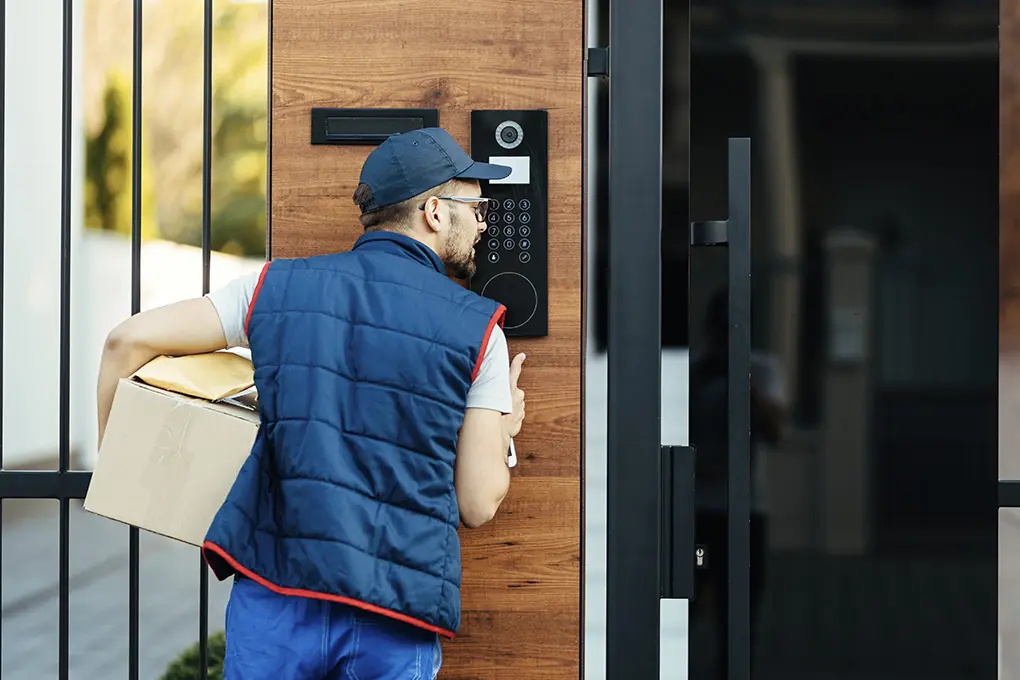If you’ve ever lost power on a sweltering summer afternoon, you know how quickly things go from inconvenient to unsafe. The fans stop spinning. The fridge starts warming. And before long, your home feels like an oven. For families with small children, elderly relatives, or medical needs, that heat can become a serious threat.
You’re not imagining it, summer blackouts are getting worse. Over the past decade, the U.S. has seen a 60% increase in summer outages compared to the early 2000s. Nearly half of all weather-related power failures now happen during the summer, and rising temperatures are making things worse.
Equally as alarming is that according to the EPA, in the contiguous United States, temperatures have risen more than 60% more than the global average since the 1970s, indicating that heatwaves and related power outages are here to stay.
If you think summer outages are just short annoyances, think again. These disruptions are lasting longer, hitting harder, and happening more often. Each extra heatwave day raises outage frequency by 0.5%, and even a one-degree increase pushes the numbers higher. This leaves unprepared households exposed to food spoilage, heatstroke risk, and compromised home security.
This guide will help you take control before the next blackout hits. From backup power to heat safety strategies, we’ll walk you through everything you need to keep your home safe, cool, and functional when the grid goes down.
Contents
- Key Takeaways
- Why Summer Power Outages Are Different and More Dangerous
- Creating Your Summer Power Outage Emergency Plan
- Essential Supplies for Summer Power Outage Preparedness
- Keeping Your Family Cool Without Electricity
- Protecting Your Food and Medications
- Maintaining Home Security During Extended Outages
- Creating Backup Power Solutions
- Water Storage and Hydration Strategies
- Recovery and Lessons Learned
- Advanced Preparation for Vulnerable Family Members
- Building Community Resilience
- Preparing for a Power Outage in the Summer: Final Thoughts
- Frequently Asked Questions
Key Takeaways
- Summer outages are increasing in frequency, severity, and duration due to higher temperatures and grid stress.
- Heat-related illness becomes a serious risk within hours of losing air conditioning, especially for vulnerable individuals.
- Effective emergency planning includes assessing family needs, identifying cooling spaces, and storing sufficient water.
- Battery-powered cooling tools, solar chargers, and portable backup systems help maintain safety during prolonged outages.
- Keeping food and medication safe requires passive cooling strategies, insulated storage, and temperature monitoring tools.
- Local relationships and neighborhood preparedness efforts can improve safety and security during extended power failures.
- Review Batten’s emergency power and preparedness kits to find trusted tools for your home’s summer outage readiness.
Why Summer Power Outages Are Different and More Dangerous
Not all blackouts are created equal. Power outages during the summer bring a unique and often underestimated set of challenges that go far beyond temporary inconvenience.
When the temperature soars and your air conditioning cuts out, your home can quickly become unsafe, especially for children, older adults, and those with medical conditions.
Overloaded Grids and Equipment Failures
During extreme heat, the power grid is under maximum stress. Air conditioners and fans work nonstop, often pushing infrastructure beyond its limits.
Equipment failures become more common, and utility companies struggle to keep up.
Portable solar panels or backup power sources can make a big difference when the grid fails, especially if you rely on electric medical equipment or need to keep food from spoiling.
Dangerous Indoor Temperatures
Inside your home, the risk grows quickly. When the temperature outside rises above 90°F, interior spaces without cooling can climb 10 to 15 degrees hotter within just a few hours.
That puts indoor temperatures well into the danger zone, especially in poorly insulated homes or apartments with sun-facing windows. Children under four and adults over 65 are most at risk for heat-related illness in these conditions.
How Heatwaves Affect Outage Frequency
This isn’t just a rare event. Research shows that heatwaves increase the frequency of power outages by about 4% and lengthen their duration by up to 8%. Every extra degree of heat raises the chance of an outage by 0.1%, and each additional heatwave day adds another 0.5% risk.
Storms and Delayed Repairs
Storms add another layer of complexity. Summer thunderstorms often damage power lines and transformers, which leads to longer, harder-to-repair outages. Compared to winter outages, summer blackouts tend to last longer because high heat makes repairs more dangerous and delays utility crews.
The Danger of Afternoon Outages
Timing matters, too. Most dangerous are outages that strike during peak afternoon hours, when outdoor temperatures are at their highest. In these cases, indoor conditions can become unsafe in as little as two to three hours, especially if you’re unprepared.
The Human Cost of Extreme Heat
This isn’t just hypothetical. Between 1999 and 2023, more than 21,000 heat-related deaths were recorded in the United States. In that time, annual deaths more than doubled, from 1,069 in 1999 to 2,325 in 2023. That’s a 117% increase, and the trend isn’t slowing down. Some estimates suggest more than 1,300 people now die from extreme heat every year in the US.
Who’s Most at Risk?
Looking at who’s most affected, adults between 55 and 64 make up the largest share of heat-related deaths. The elderly and very young also face significantly higher risks, as shown in the accompanying chart. All of this points to the need for serious planning and preparation during the hottest months of the year.
Our guide on surviving the heat dome outlines key strategies for staying safe when temperatures spike.
Creating Your Summer Power Outage Emergency Plan
Getting ready for a summer power outage involves more than just finding a flashlight or stocking up on canned food. The real goal is to protect your family’s health and safety when extreme heat and grid instability collide. With higher temperatures and longer outages becoming more common, a clear emergency plan can help you avoid dangerous situations and respond quickly when the lights go out.
Assessing Family Needs and Priorities
Start by identifying what your household requires to stay safe and functional without electricity. This means accounting for young children, elderly relatives, and anyone who relies on powered medical devices.
Make note of essential supplies, cooling alternatives, and critical medications that may require refrigeration.
It also helps to map out three possible stages: a short outage lasting under 24 hours, a multi-day event, and a full evacuation if your home becomes too hot to stay in. Planning for each situation keeps you one step ahead.
Designating a Cool Room
Next, choose the coolest room in your home where everyone can gather during an outage. This space should be on the lowest level, with limited window exposure and good airflow.
Basements, shaded ground-floor bedrooms, or windowless interior rooms often work best.
Upper floors trap heat quickly, so avoid those areas if possible. Set up this space in advance with fans, cooling towels, water, and battery-powered lights.
Planning for Communication Failures
When power and cell towers go down, staying connected becomes a challenge. Have both a primary and backup method for reaching out to family members and neighbors. A hand-crank or battery-powered weather radio is essential for getting public alerts.
Designate an emergency contact outside your area who can help coordinate messages in case local communication is cut off. Keep printed copies of key phone numbers in your emergency kit.
Preparing Your Water Supply
Water often becomes scarce during long outages, especially if electric pumps fail. Store at least one gallon per person per day for drinking, plus additional water for hygiene and cooling.
During heat events, families typically need 50% more water than they would in colder seasons. If possible, fill bathtubs and clean containers in advance to create a larger supply for non-drinking uses.
Essential Supplies for Summer Power Outage Preparedness
Unlike winter outages, summer emergencies require gear focused on cooling, hydration, and food safety. Without air conditioning, indoor temperatures can rise quickly and put vulnerable family members at risk.
A well-stocked supply kit helps prevent heat-related illness while keeping your household functional and safe. If you plan to evacuate or monitor your home remotely, consider using one of the best security cameras for rental properties, many of these also work well for primary residences.
Water for Drinking and Cooling
Water becomes the most critical resource during high-heat outages. You’ll need at least one gallon of drinking water per person per day, but plan for more during extreme heat.
Additional water should be set aside for hygiene and cooling, such as sponge baths or wet towel applications.
Use a mix of container types. Large containers work for general use, while smaller bottles can be frozen ahead of time and used as makeshift ice packs or for cooling the body.
Cooling Equipment and Airflow
When the power goes out, air circulation can make a huge difference. Battery-powered fans offer a safe way to keep air moving and prevent heat exhaustion. Many models now run for 12 to 24 hours on a single charge.
Place fans near windows or open doors to create cross-ventilation in your designated cool room. Combine airflow with damp towels around the neck, wrists, or ankles to lower body temperature more effectively.
Food Safety and Short-Term Preservation
During hot weather, food can spoil faster than expected. Stock up on non-perishable items that don’t need refrigeration, but also prepare to protect refrigerated food during short outages. Keep a digital, battery-powered thermometer in the fridge to monitor temperatures.
Have coolers and ice packs ready in case you need to transfer items. If managed well, this setup can maintain safe temperatures for up to 48 hours.
Portable Power for Essentials
Small backup power systems can keep you connected and comfortable during extended outages. Portable power stations are especially helpful for running communication devices, battery chargers, small fans, and even medical equipment.
While they won’t power your entire home, they offer enough capacity to support high-priority needs and reduce stress when the grid fails. If your family relies on powered devices, having one of these on hand is a smart move.
Keeping Your Family Cool Without Electricity
When a summer outage hits, losing power can be dangerous. Indoor temperatures can climb rapidly, putting young children, older adults, and pets at risk.
Without air conditioning, you’ll need practical, low-tech methods to keep your household safe. The strategies below focus on how to reduce heat stress using passive cooling, water-based techniques, and smart behavioral adjustments.
Understand How Heat Impacts the Body
Heat-related illness often begins subtly. As temperatures rise, the body struggles to maintain a safe core temperature. Without active cooling, this can lead to exhaustion or even heat stroke. Understanding this progression is the first step toward protecting your household.
Cooling the body directly, rather than the room, is often more effective during a blackout. Focusing on core temperature control helps reduce risk even when the home is still hot.
Create Cooling Zones with Ventilation
Designate specific rooms as cooling zones by closing off unused areas. Keep windows shut during the hottest hours to prevent heat from entering. Then, during the early morning and late evening, open windows to allow in cooler air. Cross-ventilation can make a noticeable difference, especially when combined with fans or wet towels.
Use Water to Reduce Body Heat
Water-based methods are among the simplest and most effective ways to cool down. Fill spray bottles with cool water and mist skin regularly. Place damp towels on wrists, ankles, neck, and temples to help lower internal temperature. If water is available, brief showers or sponge baths can provide fast relief.
Adjust Clothing and Activity Patterns
What you wear and when you move matters. Stick to lightweight, breathable fabrics in light colors. Shift any necessary chores to early morning or late evening, and limit physical activity during peak heat hours. Staying still and shaded during the afternoon can significantly reduce overheating risk.
Watch for Signs of Heat-Related Illness
Stay alert for early symptoms like dizziness, muscle cramps, and excessive sweating. These may signal the onset of heat exhaustion.
More serious signs, such as confusion, flushed skin, or a rapid heartbeat, could indicate heat stroke. Have a plan in place to cool affected individuals immediately and contact emergency services if symptoms worsen.
Protecting Your Food and Medications
Summer outages create a narrow window to keep food and medication safe. Once the power goes out, refrigerator temperatures can rise above 40°F within two to four hours, putting perishables at risk. A fridge can keep food safe for around four hours when the power goes out.
Frozen food may last up to 48 hours in a full, unopened freezer, but time is limited. Understanding these timelines can help you act quickly and avoid foodborne illness.
Food Safety Strategies
Plan to use perishables strategically. Start with dairy, meats, and leftovers, focusing on foods that can be eaten cold or require minimal preparation. Move critical items to a cooler packed with ice or frozen gel packs as the fridge warms. Monitor what gets used first to avoid waste and illness. Cook thawed frozen food only if it remains within a safe temperature window.
Battery-powered thermometers are essential. Place one in your fridge and one in your freezer to track temperature changes. When in doubt, remember this simple rule: discard any refrigerated food that has been above 40°F for over two hours.
Medication Storage
Many prescriptions, especially insulin and certain heart medications, can degrade or become unsafe when exposed to excessive heat. Set aside a small emergency medication kit with cooling packs specifically made for pharmaceutical use. Keep this kit somewhere accessible and insulated from heat.
It’s also wise to consult your pharmacist in advance about how long your medications can remain viable without refrigeration. They can offer storage tips specific to your prescriptions.
Maintaining Home Security During Extended Outages
Security becomes a major concern when the power goes out. Alarm systems, door locks, and cameras may all fail at once, especially if they rely on electricity without reliable backup. This creates opportunities for break-ins or other risks, particularly during high-stress emergencies.
Relying on Battery and Solar Power
Basic security systems with battery backup may work for short periods, but most homeowners don’t realize how quickly those batteries drain, especially when multiple sensors remain active. Test your system ahead of time and keep extra batteries on hand.
Solar-powered outdoor lights can help maintain visibility at key entry points. These units charge during the day and activate at night, offering a reliable source of perimeter lighting even during extended outages.
Using Manual Security Measures
Prepare for the possibility of going without electronics entirely. Keep flashlights near all entrances for quick perimeter checks. Use curtains and blackout window coverings to limit visibility into your home at night.
Avoid using high-beam lights near windows, as they may draw attention from the outside. Instead, use interior lighting sparingly and choose dimmer battery-powered options that allow you to see without advertising your location.
Neighborhood Communication
One of the most effective ways to maintain security is staying connected with your neighbors. Before an emergency strikes, build relationships that allow for mutual check-ins, resource sharing, and informal watch groups.
During outages, this kind of coordination can replace some of the functionality of your electronic systems.
Having a trusted neighbor who can help monitor your property or respond in an emergency can be just as valuable as high-tech equipment when the grid is down.
Creating Backup Power Solutions

Planning for backup power during summer outages means finding practical solutions that keep essential systems running without overextending your resources. The goal isn’t to power your entire home, it’s to keep your family safe, connected, and cool until regular service resumes.
Choosing the Right System
Portable power stations are one of the most flexible options for families. They can run communication devices, small cooling fans, lights, and even medical equipment for 12 to 48 hours depending on battery size and usage. Unlike gas generators, they require no fuel, operate quietly, and are safe to use indoors.
For homes with critical power demands, such as oxygen machines or refrigerated medications, a better solution may be necessary.
Larger battery units or portable generators can meet these needs, and whole-home generators may be worth considering for households with frequent or prolonged outages. However, it’s important to size your solution realistically based on your highest-priority needs, not your entire home load.
Using Solar Charging for Long-Term Outages
Summer sunlight makes solar charging a natural complement to battery systems. Portable solar panels can recharge devices, top up battery packs, or run basic electronics throughout the day.
This setup is particularly useful during multi-day outages when fuel supplies are uncertain or unavailable. For families focused on long-term preparedness, solar options provide consistent, renewable power without dependence on external delivery.
Water Storage and Hydration Strategies
Staying properly hydrated during a summer outage requires more than storing the usual gallon of water per person per day. In high heat, the body loses more fluids through sweat, and families often need water for cooling, hygiene, and cooking in addition to drinking.
How Much Water You Really Need
Plan for 1.5 to 2 gallons of water per person per day during summer outages. This covers hydration, food prep, sanitation, and basic cooling needs like wet cloths or sponge baths. Include extra water for pets and be sure to freeze smaller bottles in advance. These can double as makeshift ice packs before being consumed.
Storage Methods and Rotation
Use a mix of large containers for general use and smaller bottles for personal consumption and portable use. Store water in cool, shaded areas to maintain quality. Rotate stored water every six months, clearly label all containers, and consider adding purification tablets for long-term safety.
Purifying Emergency Water Sources
If outages affect municipal water pressure or quality, be ready to treat water from alternative sources. Know where your nearest lakes, rivers, or emergency supply points are, but never assume water is safe without purification. Boiling, filtration systems, and chemical treatment options should be part of your emergency kit, especially if outages last more than 72 hours.
Recovery and Lessons Learned
Once the power returns, the recovery phase begins, and it’s often when families realize what they forgot to prepare. Knowing how to respond after an outage helps reduce further risks and improve future readiness.
Safe Reentry and Home Checks
Start by walking through your home to assess for damage caused by heat or power fluctuations. Check refrigerated and frozen items for spoilage and discard anything that may have reached unsafe temperatures. Inspect electronics for overheating or reset issues, and gradually restart appliances to avoid overwhelming circuits during reactivation surges.
Learn From the Experience
Outages often reveal weak points in your plan. Maybe your battery supply ran out too soon or your water storage wasn’t sufficient. Keep a running list of what worked and what didn’t. Update your emergency plan accordingly and stock your kit based on real usage, not just assumptions.
Build Long-Term Resilience
Consider improvements that reduce future outage risks. These might include installing blackout curtains, adding attic insulation, or upgrading to permanent backup systems like solar-charged batteries.
Even small additions, like reflective window films or insulated coolers, can make a big difference during future summer outages. Use each event as a chance to strengthen your overall preparedness.
Advanced Preparation for Vulnerable Family Members
For households with infants, seniors, or individuals with medical conditions, summer outages can pose serious risks. These groups are more likely to experience complications from heat exposure, loss of electricity, and service disruptions, which means your emergency plan must address their needs with added precision.
Medical Equipment and Critical Supplies
If someone in your household relies on powered medical devices such as oxygen machines, CPAP units, or insulin that requires refrigeration, plan ahead for reliable alternatives.
Keep battery backups charged and accessible, identify manual alternatives where possible, and maintain an updated list of emergency contacts, including primary care providers and local hospitals.
Some areas allow you to register medical dependencies with emergency services to receive priority assistance during outages.
Cooling Strategies for High-Risk Individuals
Cooling plans for vulnerable family members should go beyond general household measures. Set up a designated cool zone with battery-operated fans, frozen water bottles, and reflective curtains to block heat.
If indoor temperatures become unsafe, have a plan for immediate relocation to a cooling center or another secure, air-conditioned space. Monitor for early signs of heat stress such as fatigue, dizziness, or confusion and act immediately if symptoms appear.
Communication and Emergency Access
Emergency communication plans should cover both day-to-day check-ins and access to help during extended outages.
Keep a printed list of phone numbers and emergency contacts, as cellular service and internet access may become unreliable. Coordinate with neighbors, caregivers, or home health professionals to ensure vulnerable individuals are never left without oversight during a power loss.
Building Community Resilience
The strength of your local community often plays a central role in how well families cope with long outages, especially during extreme heat. Establishing trusted relationships with neighbors before an emergency can create a dependable support network when systems are down.
Share Resources and Information
Talk to your neighbors about your emergency plans and ask about theirs. Discuss ways to support each other, such as sharing cooling space, exchanging supplies, or conducting welfare checks. Preparedness doesn’t have to be a solo effort, as many communities benefit from informal agreements that improve everyone’s safety.
Join or Start a Local Preparedness Group
Community preparedness groups can be especially effective during summer outages. These groups often organize shared resources like generators, arrange for group supply runs, or create a shared check-in system. If your neighborhood doesn’t already have one, consider starting with a few nearby households and expanding over time.
Know Where to Go Before You Need It
Familiarize yourself with available public resources such as cooling centers, emergency shelters, and community hubs with backup power.
Local libraries, schools, or government buildings may serve as safe places during prolonged outages. Keep these locations marked on a printed map along with their hours of operation and contact numbers.
Taking time to connect with your community and prepare for vulnerable family members now can prevent serious consequences when the next outage hits.
Preparing for a Power Outage in the Summer: Final Thoughts
Summer power outages are no longer rare or short-lived. As temperatures rise and the grid struggles to keep up, every household needs a strategy for staying safe without electricity. From creating cooling zones and storing water to safeguarding medication and food, effective preparation means anticipating your family’s most urgent needs and responding with clear, flexible plans.
Vulnerable individuals, especially children, older adults, and those with medical needs, require even more attention.
Community support, neighborhood planning, and portable backup power can turn a crisis into a manageable situation. Treat every outage as a learning experience and continue building toward greater resilience. Your preparation today can protect your family tomorrow when the next blackout arrives.
Browse Batten’s emergency preparedness solutions and power backup systems designed to keep your family safe when the lights go out and temperatures soar.
Frequently Asked Questions
How Can I Keep My Pets Safe During a Summer Outage?
Ensure pets stay in your designated cool room and have access to plenty of water. Avoid walks during peak heat and use cooling mats or wet towels to help regulate their body temperature.
What Types of Fans Work Best When the Power Goes Out?
Battery-powered fans with USB charging or built-in lithium batteries work best. Some models can run 12 to 24 hours on a single charge and are ideal for small rooms or designated cooling areas.
Are There Tax Credits for Installing Backup Power Systems?
Yes, some states and federal programs offer tax incentives or rebates for battery systems and solar panels. Check energy.gov and local government sites for eligibility and application requirements.
How Do I Know if My Medication Is Still Safe After an Outage?
Use a fridge thermometer to track temperature changes. If medications were exposed to temperatures above safe storage limits, contact your pharmacist before continuing use.
What Should I Do if My Neighborhood Has No Cooling Centers?
Contact your city or county emergency management agency. In the meantime, coordinate with nearby households to create a shared cool room using battery-powered fans, insulation, and pooled resources.
Sources
- Impacts of heatwaves on electricity reliability: Evidence from power outage data in China – ScienceDirect
- Heat Season Power Outages | Climate Central
- Extreme Heat | US EPA
- Climate Change Indicators: Heat-Related Deaths | US EPA
- QuickStats: Percentage Distribution of Heat-Related Deaths, by Age Group — National Vital Statistics System, United States, 2018–2020 | MMWR
- Trends of Heat-Related Deaths in the US, 1999-2023 | Colorectal Cancer | JAMA | JAMA Network
- Food Safety During Power Outage | FoodSafety.gov




